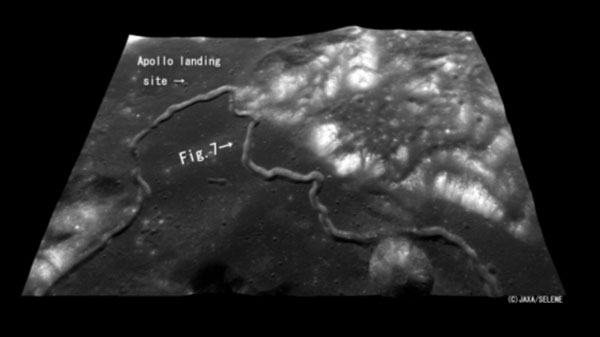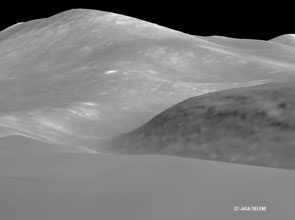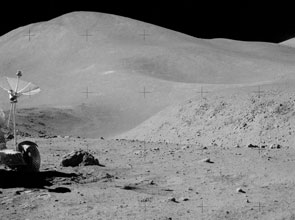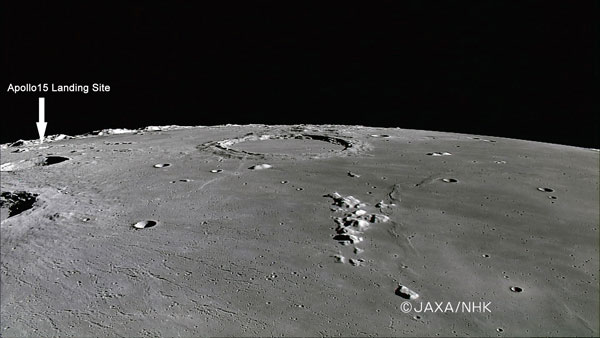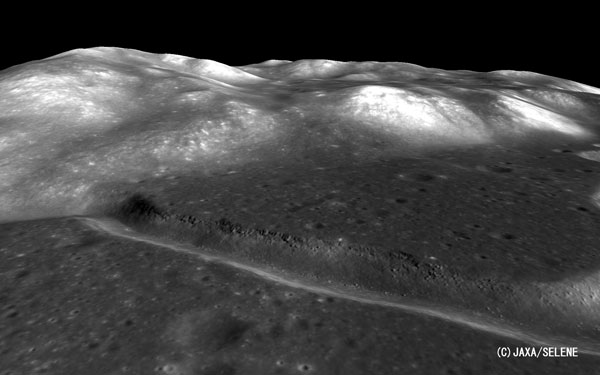The "halo" area around Apollo 15 landing site observed by Terrain Camera on SELENE(KAGUYA)
Japan Aerospace Exploration Agency (JAXA)
The Japan Aerospace Exploration Agency (JAXA) reported on the "halo" generated by the Apollo 15* lunar module engine exhaust plume that was detected in the data from Terrain Camera (TC) image.
This was an image processed by the SELENE mission instrument team from the observation data of the Apollo 15 landing site on the moon (the foot of the Apennine Mountains encircling the Mare Imbrium close to Hadley Rille). This is the world's first report on the detection of the "halo" through observations after the end of the Apollo program.
Through the produced three-dimensional image of the same landscape as that of the picture taken by the Apollo 15 crew, the spatial accuracy of the TC observation was verified. The three dimensional view of the TC clearly shows the layers of lava flows that erupted approximately about 3.2 billion years ago in the upper part of the Hadley Rille.
* The Apollo 15 was the ninth manned mission, and fourth lunar landing mission of the Apollo program. The Apollo 15 was launched on July 26, 1971 (JST), landed on the Moon on July 31, 1971, and then landed back on Earth on August 8, 1971. This mission was the first "J mission" and was primarily concerned with scientific research, and stayed longer on the Moon than previous Apollo missions.
The "Falcon" Lunar Module of the Apollo 15 landed on the moon on July 31, 1971 (JST) near the Hadley Rille, at the foot of the Apennine Mountains encircling the Mare Imbrium. The Hadley Rille is a sinuous Rille with a length of 80km and depth of 300m. One of the missions of the Apollo 15 was to study the origin of this Rille. The Rille and the towering mountains near the Rille make this a place of scenic beauty.
This three-dimensional (3D) image was produced from stereo pair image data of the Terrain Camera (TC). The view point was set to show the Rille from the west at a height of 15km.

(The star mark is the landing site, and the red arrow stands for the view direction of Fig 1)
(reference: http://www.lpi.usra.edu/)
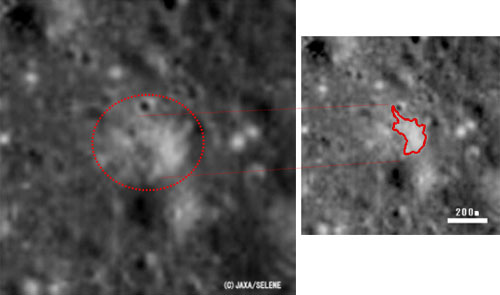
The reflectivity of the "halo" area became brighter than the original one by the Apollo 15* lunar module engine exhaust plume and the probable "halo" area was confirmed.
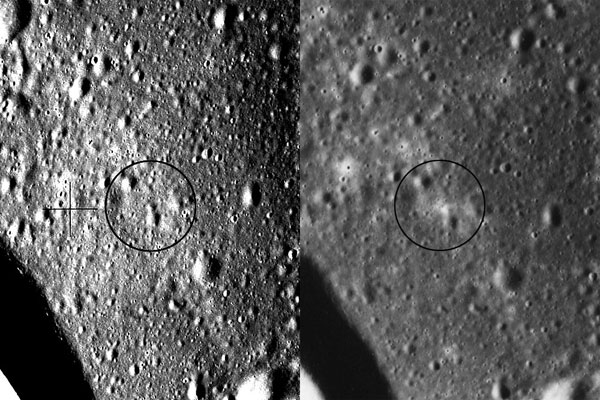
(provided from NASA (left image : AS15-87-11719, right image : AS15-9430))
Figure 4 shows the reflectivity change of the surface before and after the landing of the Apollo 15. The left image was taken obliquely from the descending lunar module. The right image was taken from the command service module from an altitude of 110 km on the second orbit of the Moon after the landing. The circle area includes the landing site, and the "halo" can be seen in the right image.
(Fig 5) TC 3D image and the picture taken by Apollo 15 astronaut. (left image : TC, right image : Apollo)
The viewpoint of the 3D image produced from TC stereo-pair data can be freely changed. The 3D image from TC data shows quite a similar landscape (left image) to the picture taken by the Apollo 15 crew (right image; provided from NASA: AS15-82-11122HR). Although the small objects (e.g. rocks) cannot be shown in this TC image because their respective sizes are less than the spatial resolution of the TC of 10 meters, the shape of the mountains and hills is almost the same, indicating the spatial observation accuracy of the TC is very high.
(Fig.6) This still image is a cutout from the movie taken by the SELENE (KAGUYA) HDTV (telephoto camera) on January 29, 2008 (JST.). The Apollo 15 landing site, as well as the Montes Apenninus, Hadley Rille (in the left) and Archimedes crater (in the center) are seen in this image.
(Fig 7) 3D view image around the Hadley Rille obtained by TC
During the Apollo 15 mission, astronauts also collected samples of mare basalt near the Hadley Rille. They confirmed that the Mare Imbrium was composed of many layers of lava flows, from several to ten meters in depth. The 3D view of the TC looking at the southeast direction from the northwest clearly shows the layers of lava flows on the upper parts of the Rille's wall. These layers were probably formed approximately about 3.2 billion years ago.
|
|
